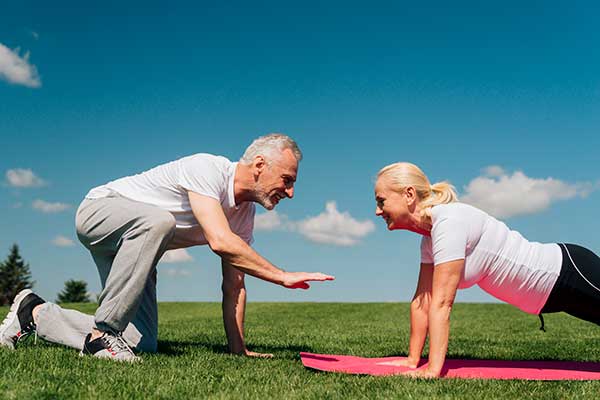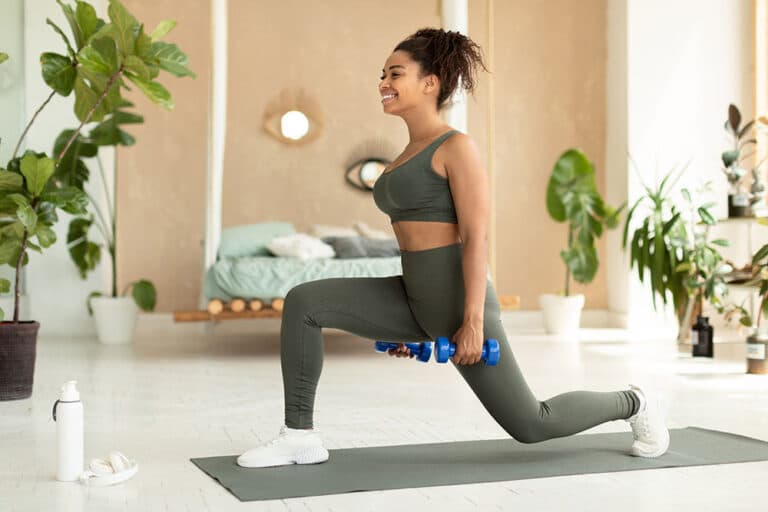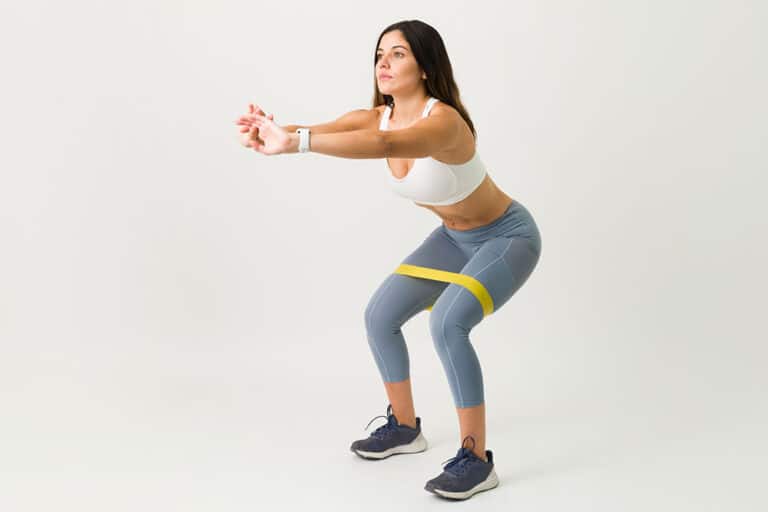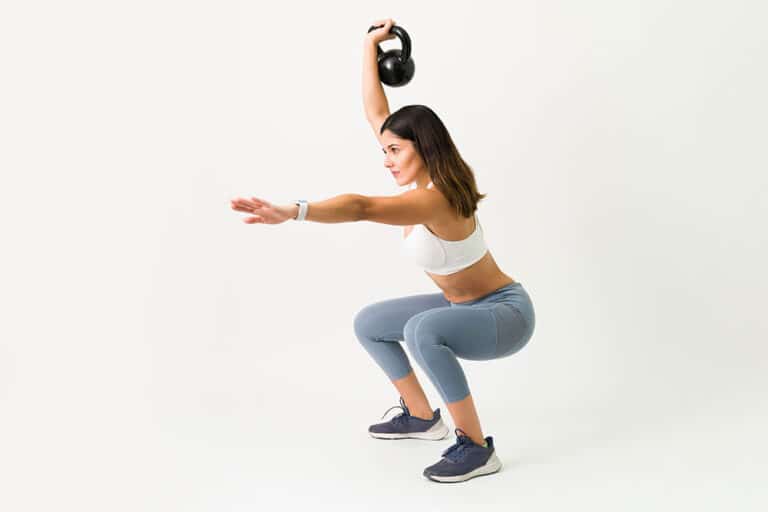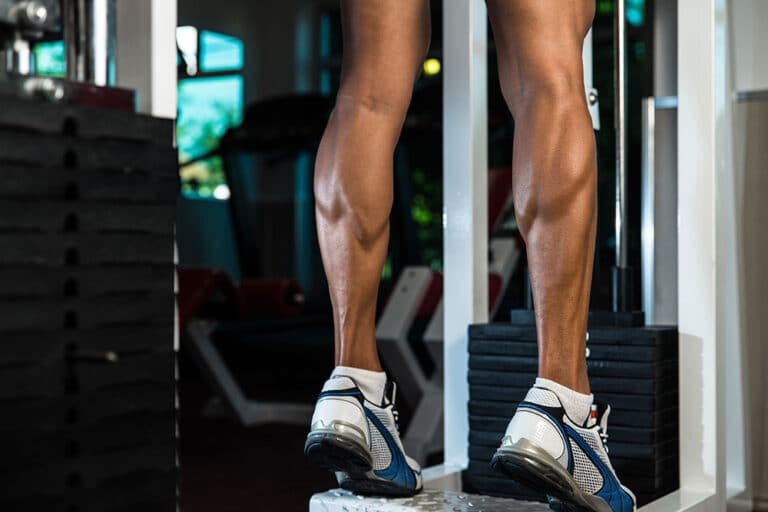Importance of Leg Exercises for Seniors
Seniors can greatly benefit from incorporating leg exercises into their routine. Here, we focus on two primary benefits: enhancing mobility and independence, and preventing falls and injuries.
Enhancing Mobility and Independence
Strengthening the legs is vital for maintaining mobility, balance, and independence for seniors. Healthy leg muscles play a crucial role in daily activities such as walking, standing up, and climbing stairs. Engaging in regular [leg exercises for elderly] helps slow down age-related muscle loss, enabling seniors to maintain their physical abilities and independence for a longer duration (Westmont Living).
Strong legs significantly impact the quality of life by influencing everyday activities. Here’s a table highlighting some common leg exercises and the muscles they target:
| Exercise | Targeted Muscles |
|---|---|
| Chair Squats | Quadriceps, Glutes |
| Calf Raises | Calves |
| Leg Curls | Hamstrings |
Consider reading more about specific exercises in our detailed guides such as [how to do bodyweight squats] and [calf exercises without weights].
Preventing Falls and Injuries
Leg exercises can greatly enhance mobility, improve balance, and reduce the risk of falls among seniors. As people age, the risk of falling increases, often leading to severe injuries. By engaging in suitable leg-strengthening exercises, seniors can improve their overall stability and coordination, essential factors in preventing falls and avoiding associated injuries.
Incorporating a balanced routine that includes both strength and flexibility training ensures comprehensive leg health:
| Exercise Type | Benefits |
|---|---|
| Strength Training (e.g., Leg Curls) | Builds muscle strength, enhances joint stability |
| Flexibility Training (e.g., Stretching Exercises) | Increases range of motion, reduces muscle stiffness |
Detailed guidance on creating an effective routine can be found in our section on Optimal Exercise Frequency and Routine.
Understanding the importance of leg exercises, seniors can also benefit from seeking personalized advice from healthcare professionals. Tailoring exercises to their individual needs ensures safety and maximizes the positive impact on their mobility and overall health. For more safety tips, refer to our section on Consulting Healthcare Providers.
By prioritizing leg exercises, seniors can achieve enhanced mobility, increased independence, and a reduced risk of falls, ultimately leading to a better quality of life. Explore our additional resources such as [morning leg exercises] and [leg workout frequency bodyweight] for further information.
Warm-Up Exercises for Seniors
Warm-up exercises play a significant role in preparing the body for more intense physical activities, especially for seniors. Proper warm-ups help enhance performance and reduce the risk of injuries.
Importance of Warm-Ups
Warm-ups are essential for seniors as they elevate core body temperature, prepare the heart, muscles, and joints for physical activity, and are particularly vital in cooler temperatures to reduce the risk of heart strain. Here are several reasons why warm-ups are crucial:
- Improving Circulation: Warm-ups widen blood vessels, ensuring muscles receive adequate oxygen. This enhances circulation and energy levels.
- Reducing Stiffness: Regular warm-ups can help manage chronic conditions like arthritis by reducing stiffness and improving mobility, making daily activities more comfortable for seniors.
- Increasing Flexibility: Warming up raises muscle temperature, which improves flexibility and increases the efficiency of muscle contractions.
- Gradually Raising Heart Rate: A good warm-up helps minimize stress on the heart by slowly raising the heart rate and preparing the cardiovascular system for more strenuous activities.
- Enhancing Mental Focus: Proper breathing during warm-ups improves oxygen delivery to muscles, enhances mental focus, and maintains calmness, which is vital for effective exercise.
Effective Warm-Up Routine
An effective warm-up for seniors should last about 5-10 minutes, gradually increasing heart rate and loosening the muscles to prepare for more strenuous activity (Physio Ed). Here is a simple and effective warm-up routine:
1. Marching in Place (1-2 minutes):
- Lift your knees high, as if marching.
- Swing your arms gently while marching.
- Maintain a steady pace and breathe deeply.
2. Arm Circles (1 minute):
- Extend your arms out to the sides.
- Make small circles, gradually increasing the size.
- Perform circles in both directions.
3. Leg Swings (1-2 minutes):
- Hold on to a sturdy chair or wall for balance.
- Swing one leg forward and backward gently.
- Switch legs and repeat.
4. Shoulder Rolls (1 minute):
- Lift your shoulders toward your ears and then roll them back and down.
- Alternate between rolling shoulders forward and backward.
5. Ankle Rotations (1-2 minutes):
- Sit or stand near a support.
- Lift one foot off the ground and rotate the ankle in circles.
- Switch feet and repeat.
By incorporating these warm-up exercises, seniors can effectively prepare their bodies for more intense leg workouts. This routine will help improve flexibility, enhance mobility, and reduce the risk of injury.
For more information on leg exercises, check out our articles on how to do bodyweight squats, bodyweight leg challenge, and leg exercises for bad knees.
Leg Strengthening Exercises for Seniors
Leg strengthening exercises are critical for enhancing mobility, balance, and overall health in seniors. Targeting specific leg muscles can lead to significant improvements in daily activities and reduce the risk of falls and injuries.
Targeting Specific Leg Muscles
Focusing on particular muscles helps in maintaining joint health and performing everyday activities like walking and climbing stairs. Here are some effective leg exercises that target specific muscles:
-
Chair Squats: This exercise targets the quadriceps, hamstrings, and glutes. To perform chair squats, stand in front of a chair with feet shoulder-width apart. Lower the body as if sitting down, then stand back up. For more detailed instructions, check our guide on how to do bodyweight squats.
-
Calf Raises: This exercise focuses on the calf muscles. Stand with feet hip-width apart, lift the heels off the ground, and then lower them back down. Detailed variations can be found in our article on calf exercises without weights.
-
Leg Curls: These strengthen the hamstrings. While sitting in a chair, extend one leg straight in front, then bend the knee and bring the heel toward the seat of the chair. Repeat on both legs.
Here’s a table summarizing these exercises:
| Exercise | Target Muscles |
|---|---|
| Chair Squats | Quadriceps, Hamstrings, Glutes |
| Calf Raises | Calf Muscles |
| Leg Curls | Hamstrings |
For more leg exercises tailored for various needs, see our section on leg exercises for bad knees.
Benefits of Regular Leg Workouts
Regular leg workouts offer numerous benefits for seniors:
-
Enhanced Mobility and Independence: Strengthening leg muscles helps with mobility, making everyday activities more manageable.
-
Improved Balance and Reduced Fall Risk: Consistent leg exercises can enhance balance, significantly lowering the risk of falls and associated injuries (Hinge Health).
-
Better Joint Health: Strengthening exercises help in maintaining joint flexibility and health, crucial for performing daily tasks without discomfort.
-
Reduced Risk of Osteoporosis: Leg exercises have been shown to reduce the risk of osteoporosis in older adults, promoting bone health.
-
Prevention of Sarcopenia: Progressive strength training helps reduce sarcopenia, the loss of muscle mass with aging, and retains motor function (NCBI).
For detailed workout plans and routines, consider our guide on leg workout frequency bodyweight.
Incorporating these exercises into a daily or weekly routine can lead to significant improvements in overall health and well-being for seniors. Tailoring the workout to individual needs with the guidance of a healthcare provider ensures safety and maximum benefit (Westmont Living).
Balance and Flexibility Training
Balance and flexibility training are integral components of a comprehensive leg exercise regimen, especially for seniors. Incorporating these exercises helps maintain mobility, reduces the risk of falls, and enhances overall quality of life.
Importance of Balance Exercises
Balance exercises play a crucial role in an older person’s daily life, significantly impacting their confidence and independence. Improved balance can prevent falls and related injuries, a common concern for seniors. Additionally, balance exercises help enhance coordination and stability, making everyday activities safer and more manageable.
Seniors should aim to perform balance exercises at least twice a week. Here are some simple yet effective balance exercises:
- Tightrope Walk: This exercise involves walking slowly on a straight line or tape, like walking a tightrope, with arms extended to the sides and trying to keep feet on the line at all times. It helps enhance coordination and stability.
- Flamingo Stand: This exercise, beneficial for hip muscles and core stabilization, involves standing with feet shoulder-width apart, touching hands to a wall, and raising one leg up to the hip as though marching.
For a more detailed balance training plan, you can refer to our section on morning leg exercises to start your day with balance and flexibility workouts.
Incorporating Flexibility Workouts
Flexibility workouts are essential for maintaining the range of motion in the joints and preventing stiffness, which is especially important for seniors. Flexibility exercises should be gentle and can be done daily to keep muscles and joints supple and capable of performing everyday tasks with ease.
Some effective flexibility exercises include:
- Seated Hamstring Stretch: Sit on the edge of a chair with one leg extended straight out, heel on the floor. Reach towards the toes to stretch the hamstring. Hold for 20-30 seconds and switch sides.
- Standing Calf Stretch: Stand facing a wall, place hands on the wall at shoulder height, step one foot back, keeping it straight, and bend the front knee to stretch the calf muscle. Hold for 20-30 seconds and switch sides.
Incorporating flexibility workouts alongside leg-strengthening exercises ensures a well-rounded fitness routine tailored to the needs of seniors (Courtyard Gardens Senior Living).
| Exercise | Frequency | Duration |
|---|---|---|
| Tightrope Walk | 2-3 times a week | 1-2 minutes |
| Flamingo Stand | 2-3 times a week | 1-2 minutes per leg |
| Seated Hamstring Stretch | Daily | 20-30 seconds per leg |
| Standing Calf Stretch | Daily | 20-30 seconds per leg |
For more detailed guidance and tips, check out our articles on leg exercises for bad knees and leg exercises while traveling.
Optimal Exercise Frequency and Routine
Seniors looking to enhance their leg strength, mobility, and overall health can benefit greatly from a structured exercise routine that incorporates regular, targeted leg exercises. Here, we outline the optimal frequency and routine for engaging in leg exercises for the elderly, based on expert recommendations.
Frequency of Leg Exercises
According to the Australian Physical Activity and Sedentary Behaviour Guidelines, it is recommended that adults participate in muscle-strengthening activities involving all major muscle groups, including the legs, at least two days per week. For seniors, more frequent training may yield greater benefits. Studies suggest training three to four times weekly can significantly improve muscle strength and recruitment, even in those with lower initial performance levels (NCBI).
For seniors engaging in leg-strengthening exercises two to three times per week, it is crucial to allow for adequate recovery time. Performing exercises on non-consecutive days helps ensure muscles have sufficient time to repair and strengthen, reducing the risk of injury.
| Exercise Frequency | Recommended Sessions per Week | Notes |
|---|---|---|
| Minimum | 2 | Involves all major muscle groups |
| Optimal | 3-4 | For significant strength gains in seniors |
Structuring an Effective Routine
A well-structured exercise routine should balance intensity, variety, and rest. Seniors can follow these key components to create an effective leg exercise regimen:
-
Warm-Up: Begin with a gentle warm-up to increase blood flow to the muscles and reduce the risk of injury. Incorporate a mix of light cardio and stretching. For ideas on effective warm-ups, see our section on warm-up exercises for seniors.
-
Core Exercises: Include a combination of exercises targeting various leg muscles:
- Bodyweight Squats: Strengthen quads, hamstrings, and glutes.
- Leg Exercises for Bad Knees: Customize movements to avoid strain on sensitive joints.
- Wall Exercises for Legs: Utilize walls for support and additional resistance.
- Bodyweight Lunge Variations: Enhance balance and functional strength.
-
Cool-Down: Conclude with a cool-down phase to lower heart rate gradually and stretch worked muscles. This helps enhance flexibility and promotes recovery.
-
Monitor Progress: Keeping an exercise log and monitoring progress is crucial for adjusting the routine and ensuring it stays aligned with evolving fitness levels and health conditions.
Sample Weekly Routine:
| Day | Activity |
|---|---|
| Monday | Warm-up, Bodyweight Squats, Cool-Down |
| Wednesday | Warm-up, Leg Exercises for Bad Knees, Cool-Down |
| Friday | Warm-up, Wall Exercises for Legs, Cool-Down |
A structured yet flexible routine allows seniors to enjoy the benefits of regular leg exercises while minimizing risks associated with physical activity at older ages. For additional guidance, consulting healthcare providers and exploring complementary resources like how to build leg muscle without weights can be beneficial.
Remember, safety should always be a priority. Consulting a healthcare provider before starting any new exercise program, wearing comfortable clothing and supportive shoes, and respecting personal limits are essential for successful and safe workouts.
Safety Tips and Considerations
To ensure that leg exercises are both safe and effective for seniors, some important safety tips and considerations must be kept in mind.
Consulting Healthcare Providers
Before beginning any new exercise regimen, it is crucial for seniors to consult with their healthcare providers. Regular leg exercises for seniors can help slow down age-related muscle loss, assisting them in maintaining physical abilities and independence for a longer duration (Westmont Living). However, getting professional advice ensures that individuals are aware of any personal health limitations and can avoid potential complications.
Ensuring Safe Exercise Practices
Following a few simple guidelines can make leg exercises safe and enjoyable for seniors:
-
Proper Attire: Wear comfortable clothing and supportive shoes to prevent any injuries.
-
Warm-Up: Always start with a gentle warm-up. A warm-up prepares muscles for more strenuous activity and helps prevent injuries. For an effective warm-up routine, check out our section on warm-up exercises for seniors.
-
Listening to Your Body: Pay attention to how your body feels during exercise. If there is any pain or discomfort, stop immediately and consult your healthcare provider.
-
Gradual Progression: Start with simple exercises and gradually increase the intensity. This prevents overexertion and reduces the risk of injury.
-
Cool Down: Cooling down is as essential as warming up. It allows a gradual decrease in heart rate and body temperature, helping prevent light-headedness and muscle cramping. Stretching during the cool-down can also reduce the buildup of lactic acid, further aiding in muscle recovery.
Following these guidelines can help seniors safely engage in leg-strengthening exercises that promote health without compromising safety. To explore specific exercises, such as [bodyweight leg challenge] or [bodyweight lunge variations], consult our other detailed guides.
For continuous support and to ensure a comprehensive approach to leg exercises with ample variation and care, be sure to read more about [how to do bodyweight squats] and [leg exercises for bad knees]. These articles provide specific routines that cater to various needs and abilities.
- About the Author
- Latest Posts
Johnnie D. Jackow Sr., the founder and CEO of Total Body Fitness, Worldwide, has a long-standing career in the fitness industry. He began as a certified personal trainer in the mid-90s and soon after authored his first weight loss book in 1998. This led to the launch of Total Body Fitness, Nationwide in the USA at the same time. Johnnie gained recognition as the fitness guru of his time, running infomercials on local TV late at night in Houston, Texas. Over the years, he has helped more than 40,000 individuals from all over the world achieve their health and fitness goals. With over 60,000 hours of documented training in integrative functional medicine, he completed his PhD in human physiology in 2010. His primary objective is to assist people in reaching their health and fitness goals through alternative approaches rather than relying solely on conventional medicine and pharmaceutical drugs. Today, with almost three decades of experience under his belt, Johnnie continues to be a leader in health and fitness.

